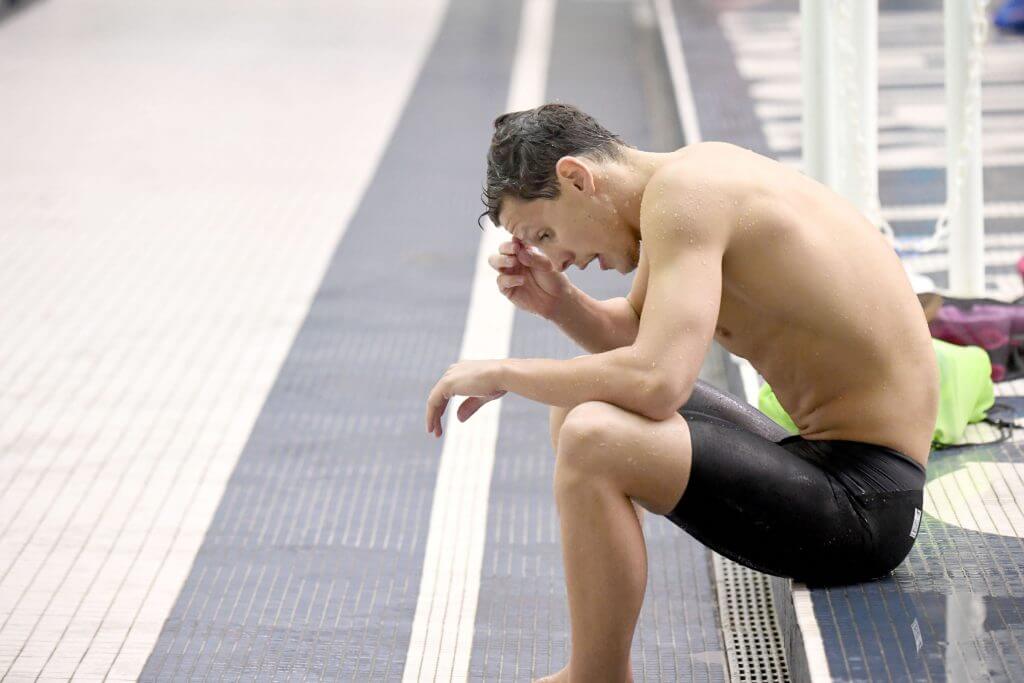All About The Comeback: A Look At Bad Races and How To Overcome Them

All About The Comeback: A Look At Bad Races and How To Overcome Them
By Sadie Jones, Swimming World Intern
It is a right of passage for a swimmer, of any age, to experience a bad race. Whether your goggles fall off right as you dive into the water, you false start off the block, you forget your two-hand touch going into the wall on your last turn of the 200 breaststroke, or you are just extremely tired and don’t feel good, you have to finish the race, learn from it, and put it in the past.
One of the worst feelings in the world, for a swimmer, is one of these unfortunate things happening during a race, but what do you do once you get out of the water, is what defines the kind of athlete you are. You have two options. You can dwell on the negative aspects of your situation or you can evaluate the steps you need to take to solve those problems for next time, and use this experience to learn.
Dwelling on the negative elements about your situation is the easiest thing to do. Finding excuses and blaming others is our first instinct when something goes wrong. It is second nature. Getting out of that pool and letting one bad swim ruin your whole day, meet, or even season is what most athletes resort to. It is the easy thing, but sometimes the easiest choices aren’t always the best choices.
Bad races already cause discomfort, so as an athlete who wants to achieve their full potential, seek even more discomfort. Put a positive spin on a bad situation. The first step to doing this is finishing your race to the best of your ability. Then, before you even get out of the pool, look to your left and your right and shake your opponent’s hands. Tell them “nice race,” regardless of how bad you are feeling about your effort. Do not let your insecurity impact anyone else.
Next, take a minute to yourself. Go warm down or take a walk. Start thinking about what went wrong, why it happened, and how you can prevent it from happening again. Self-reflection is the key to self-improvement. Your next step should be discussing your race with a coach or a teammate, and listen to their perspective and their advice on the race. Follow this path only after you have come to terms with what happened. The next step varies based on your particular situation. Are you finished with the meet? Or, was that your first race of a four day meet? Figure out what you need to do next, and remember how you will improve your chances of not having a bad race again. Lastly, put your plan into action. Tighten your goggles before you get on the block, practice your two-hand touches every day, or make sure you stretch before a big meet. Find the solution to your problem and most importantly, try again.
Many athletes let one bad event get the best of them, and this can often lead to avoiding the event or living in constant fear that the same mistake will happen the next time. You cannot let fear get the best of you. You never know if the hiccup will occur unless you, in fact, try again.
These steps to finding a positive outlook on a bad race can be applied at any level of swimming. Whether it is at a summer swim meet against the neighborhood rival or at the elite level, use your mistakes or missed opportunities as an opportunity to enhance your mental toughness and improve yourself as a swimmer and as a person.
All commentaries are the opinion of the author and do not necessarily reflect the views of Swimming World Magazine nor its staff.



